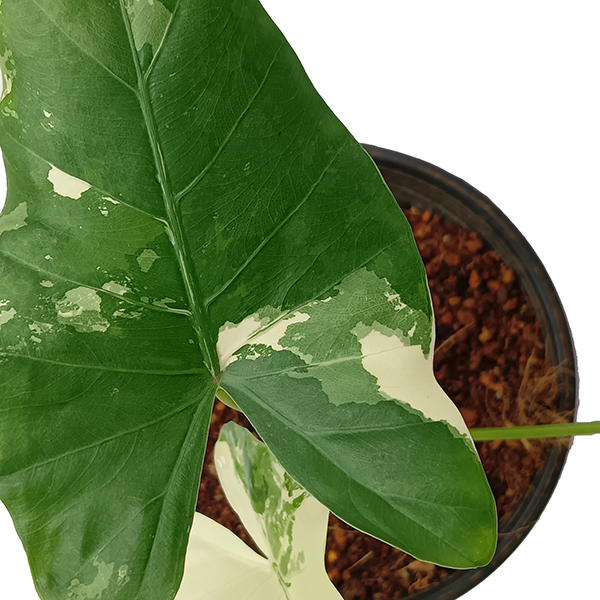
Common Name: Calathea, Beauty Star, Prayer Plants, Cathedral Plants, Peacock Plants, Zebra Plants, Rattlesnake Plants, Prayer Plants
Botanical Name: Calathea species, Geoppertia species
The mesmerizing patterns found on the foliage of calathea houseplants will likely make you do a double-take. These stunners are absolutely beautiful and can add bold color and texture to any area of your home. Even the undersides of the leaves can add visual interest, as they may provide a rich pop of color visible during the evening.
It can be tricky to get the hang of caring for these tropical plants. Calathea plants are particular about the care they receive, but once you get it down, you will be rewarded with vivid colors and the gentle motion of the leaves.
Calatheas are sometimes known as prayer plants (much like the very similar, but different maranta plants). These indoor plants have garnered this name through their unique movements, known as nyctinasty. The leaves move throughout the course of a day. It is thought this movement allows the plant to best capture the sun’s rays. The leaves will lift up with the front or face of the leaves all bunched together at night, but lower during the day in order to receive light.
Light
The ideal spot for a prayer plant will receive medium to bright indirect light. Calathea can handle low light, but increased light can help maintain the vivid colors and patterns on the foliage. Direct sunlight can be damaging and may cause colors to fade.
Water
Calathea plants have high water requirements. Thoroughly water these indoor plants when the top inch of the soil is dry. Calathea houseplants do best in well-draining soil and in containers with drainage. While calathea are certainly thirsty houseplants, they still like to dry out a bit between watering.
The type of water used can make a difference when it comes to watering calathea. Tap water may contain different minerals or compounds that can be damaging to the leaves. Brown edges along the leaves can be an indication that the water is high in salt or contains chlorine, chloramine, bromide, or fluoride. It may be best to water the plant using filtered or distilled water, or water collected from a dehumidifier if you suspect tap water is not suitable for your calathea.
Soil
Potting soil that is rich in nutrients and organic matter, but still has the ability to drain well is the perfect growing medium for all calathea. Most coco coir or peat-based potting soil mixes will be adequate but make sure that they do not contain water-retentive crystals as they can cause the soil to continually stay moist causing root rot. If you are feeling adventurous, try creating your own potting soil!
Temperature
As tropical plants, calathea like warmer temperatures. Average room temperature above 65°F is fine, but these indoor plants won’t mind if it gets warmer and the temperature creeps closer to 85°F.
Avoid placing calathea plants near exterior doors, drafty windows, and vents, particularly during the colder months. Make sure to avoid placement near air conditioning vents during the warmer months.
Humidity
High humidity is a must-have for calathea. The leaves may begin to curl or the edges will turn brown and dry out if they do not receive enough humidity. Calathea indoor plants do well in a kitchen, bathroom, or any area with extra moisture in the air. Using a humidifier or a pebble tray with water can help give calathea the extra dampness they crave. Learn how to increase the humidity in the air around your indoor plants!
Fertilizer
Fertilizing your calathea can help promote new growth and even blooms depending on the variety. A complete liquid fertilizer diluted to half-strength is a good option. When re-potting, you can also amend the soil with seaweed or fish emulsion, or worm castings. Calathea will benefit from being fertilized during the growing season. These indoor plants do not need to be fertilized during the colder months when the plant is dormant.
Pro Tips
Calatheas are moisture-loving plants, but over-watering is still a concern and can introduce a whole host of problems. Making sure the plants receive lots of bright indirect light can help regulate the dampness while helping the plant thrive.
Don’t be too worried if you notice the leaves beginning to curl or the stems of your calathea drooping. These are signs of dehydration. It’s important to pay attention to these indicators, but these hardy houseplants can bounce back within a day or so after receiving water.
Calathea can only be propagated through division. These plants naturally propagate themselves by expanding their root system and sending new shoots up through the soil. When a mature plant is re-potted, gently separate the roots to divide the main plant into several smaller plants. Each new plant can be potted in its own container. Given time and proper care, those new plants will fill in.





